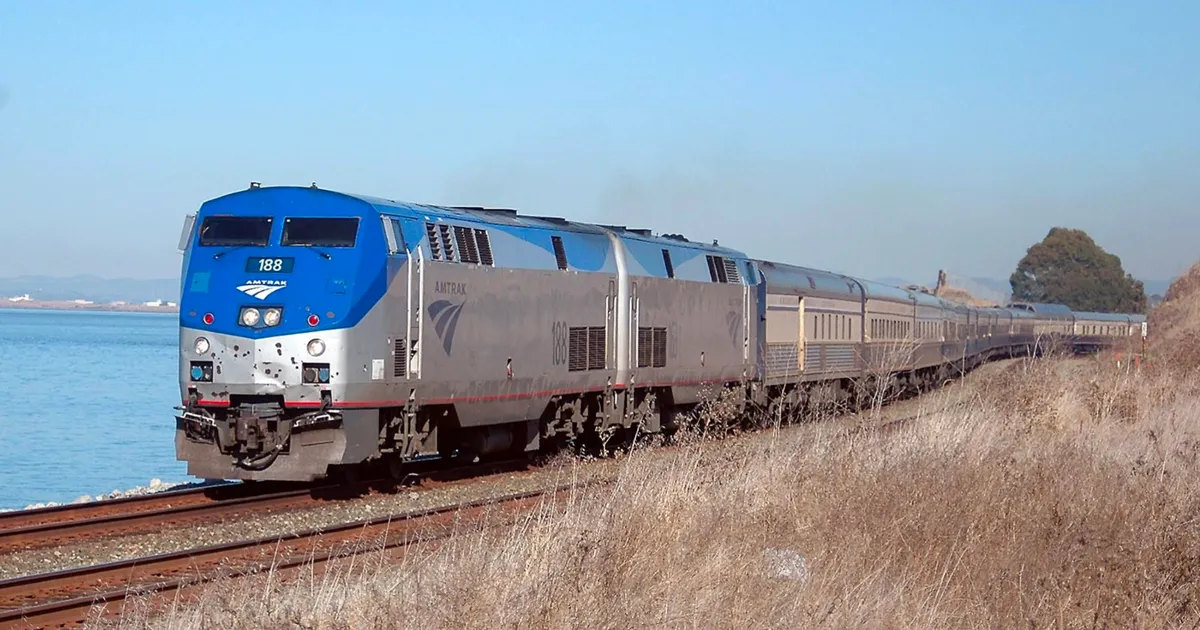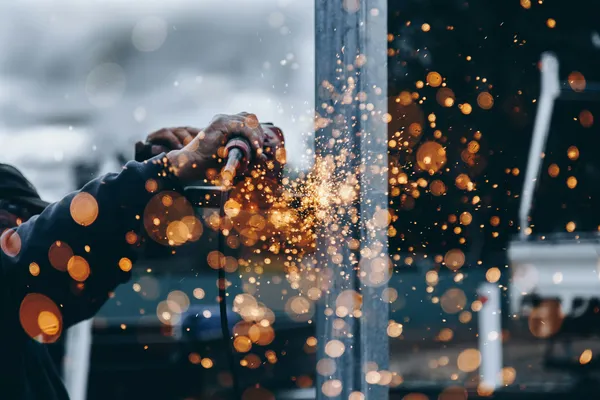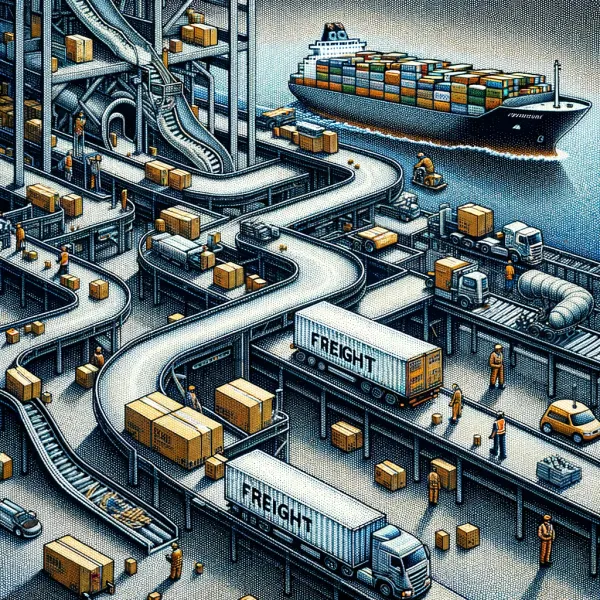
Understanding The American Railroad Industry
Written by Rachel Braun, 2021-02-18
The American railroad, as we know it today, started its journey for military purposes in 1764 under the name “gravity road” in Lewiston, New York. America's first intercity railroad was the 13 mile long Baltimore and Ohio Railroad (B&O Railroad). It was completed in the early 1830s. By the 1850s, more than 9k miles of railroad were in operation. This railroad provided a solution to connecting underdeveloped areas to developed areas and allowed access to minerals, timber, and agriculture, as well as a way to bring foods to major market centers.
The Rise Of The ICC
In 1887, the Interstate Commerce Act created the Interstate Commerce Commission (ICC). The ICC was formed in response to rising public concern about the power and wealth of corporations, particularly railroads. Railroads had become the principal form of transportation for both people and goods.
Railroads banded together and implemented fixed rates at higher levels than they could otherwise have gotten. They often charged a higher price per mile for short hauls than for long hauls. This practice discriminated against smaller businesses. Because of this, the ICC made railroads the first US industry subject to strict federal economic regulations, and railroads were forced to halt this practice. The limitations on railroad rates that these regulations imposed depreciated the value of railroad securities, devastating the industry.
By 1917, 15K US railroads operated around 254K miles and employed 1.8M people, more than any other industry.
Industry revenue plummeted 50% from 1929-1933 during The Great Depression. Roughly 30% of railroads were in receivership by 1937. During World War II, hope came about for the railroads, as the surge in war-related traffic brought a reprieve. After the war, regulations slammed the railroad industry again in the form of capping passenger route prices, resulting in the loss of huge amounts of money on passenger operations.
Shortly after, the railway industry began a steep decline. Other modes of transportation, such as air and ground, received government subsidies but railways did not receive such funding. Along with this, gas was no longer being regulated as it had been before for ground shipping. The money allowed other modes of transportation to lower their relative costs, resulting in the USPS transporting their mail by truck rather than train as they did before. This loss of steady revenue heavily impacted the rail industry.
The bad fortune continued, as the railroads competed with the government-funded highway system and airports that did not have to pay for their infrastructure. Cars were also integrated into the American culture more heavily during the post World War II years.
By the 1970s, regulations, competition from trucks and barges, along with changes in shipping patterns, pushed railroads to the brink of extinction. The Railway Passenger Service Act of 1970 created Amtrak to relieve freight railroads of money-sucking passenger routes. Still, most major railroads in the Northeast, and some in the Midwest, went bankrupt.
Deregulation And The Rise Of The STB
The Staggers Rail Act of 1980 created a new era where railroads could create their routes, decide what services they could offer, and what price to charge. This approach gave railroads the ability to shift their business to serve market demand - be it passenger or freight.
The Staggers Act, among other laws, reduced the role of the ICC in regulating the railroads and allowed lines to discontinue unprofitable routes. Railroad companies merged and consolidated their lines to stay successful. These changes led to the current system of fewer but more profitable Class I railroads that cover large regions of the US.
By 1995, Congress abolished the ICC entirely and transferred its remaining functions to a new agency, the Surface Transportation Board (STB), who continued to categorize the railroads by size as we continue to do it today.
Current Regulatory Authority
Regulation for the freight rail industry is conducted by the US Department of Transportation and the Federal Railroad Administration (FRA). Historically, federal regulations have hindered the development and advancement of the railway industry.
As stated by the U.S. Department of Transportation in 1978, “The current system of railroad regulation … is a hodgepodge of inconsistent and often anachronistic regulations that no longer correspond to the economic condition of the railroads…or the often-conflicting needs of shippers, consumers, and taxpayers.”
It should be noted that as the rail industry has fought to rebuild since the early 1990s, it’s fallen behind other modes of transportation in its digitization efforts. While regulation has been greatly reduced, current regulatory regimes are still restrictive and make it difficult to incorporate technologies to improve both performance and safety.
Class I Railroads
In 1911 the ICC established three classes of railroads: Class I, II, and Class III. The ICC classified these railroads in terms of their annual gross revenue. These classifications still exist today despite the ICC being abolished.
As of January 2006, Class I railroads are defined as one with operating revenues of $490M or more. Class I railroads own the majority of tracks in North America, with lines spanning the entire continent. Monetary figures categorizing classes of trains change over time, however, the principal meaning of a Class I railroad has remained the same: the largest railroads in terms of annual operating revenue based in North America.
Class I Railroads that we recognize today include Canadian Pacific, Canadian National, CSX Transportation, Norfolk Southern, Union Pacific, BNSF Railway, and Kansas City Southern.
US Class I Railroad Operating Revenues in $B (1990-2019)

Source: [Statista]
Other Classes Of Railroad
As of 2011, to be classified as a Class II railroad in the US, the railway must have a mid-sized operating revenue, which is considered to be greater than $37.4 M but less than $433.2M for a minimum of 3 consecutive years. Regional Railroads are usually Class II Railroads.
Switching and terminal railroads are excluded from this classification. Switching and terminal railroads are freight railroad companies whose primary purpose is to perform switching services within the limits of the railroad yard, or that own and operate a terminal facility. The Internal Revenue Service provides tax incentives for this type of company.
Class III railroads have operating revenue of less than $20M annually and have not been reclassified since 1991. These railroads are short-line railroads that serve only a few towns or industries. Class III railroads may haul cars for different companies and were once branch lines for larger railroads. Many railroads of this class are owned by railroad holding companies.
Ownership And Structure Behind The System
The rail transportation system in North America is privately owned and operated. Each carrier has its facilities and markets, along with the segments that they control. This system is a result of capital investments that have occurred over time, with decades of infrastructure and equipment accumulation. This ultimately led to continuity issues within the North American rail network. To try and fix this dilemma, lines merged, however, a limit has been reached in the network size of most rail operators.
To synchronize the interactions between rail operators for long-distance trade, attempts have been made in the form of arrangements between rail carriers and shipping companies to improve intermodal interaction at the major gateways. For example, the partnership with JB Hunt and the Santa Fe facilitates the transfer of goods between inexpensive rail and more flexible over-the-road-trucking.
When a railroad first opens, it is a short spur of a mainline that is used for through trains. The owner of the spur line can contact the owner of the mainline to create a contract for operations, either as its separate line or as a branch with through services. This agreement can continue as the spur expands, or can be temporary until it is completed and it becomes its railroad. If the operating company goes bankrupt, the contract ends and the spur line must operate itself independently.
The question of which train should go first, passenger or cargo, has been a bone of contention for the industry in recent years as Amtrack fought for continued passenger preference. The preference law was introduced more than 40 years ago. Congress required permission for Amtrack to operate on freight track, and added: “Except in an emergency, intercity and commuter rail passenger transportation provided by or for Amtrak has preference over freight transportation in using a rail line, junction or crossing.”
In 2016, The Surface Transportation Board attempted to alter a law that gives Amtrak preference while traveling on freight railroads’ tracks. They interpret the law differently by defining “preference” for Amtrak as balancing the passenger rail’s needs, while still prioritizing on-time performance for freight trains. The proposal was withdrawn. This being said, The Association of American Railroads (who represents Class I Railroads) sided with freight trains initially and said that it would review the decision and evaluate legal options.
In 2019 this was settled by way of The Rail Passenger Fairness Act, a bill to permit intercity and commuter rail passenger transportation preference (such as Amtrack) over freight transportation in using a rail line, junction, or crossing.
Cross Border Services
Cross border services began with the setting of The North American Free Trade Agreement (NAFTA) in 1994. The Candian National and Candian Pacific railroads bought US lines to enable a more efficient connection with the Chicago and New Orleans hubs by way of the Illinois Central Railroad. Candian National bought the Illinois Central Railroad in 1998 and is now the only rail carrier in North America that has a tri-coastal strategy. Also in 1998, Kansas City Southern bought Transportación Ferroviaria Mexicana to form Kansas City Southern de México. Kansas City Southern de México links the port of Lazaro Cardenas to Kansas City and passes through Mexico’s key economic centers.
Railway structures continue to evolve and get more complex as operators seek greater flexibility to meet customer demand, but also uphold operating leverage to maintain economic viability. This is being done by allowing multiple access to infrastructure (the spur lines) with the dominant user (the mainline) still in charge and more forms of independent ownership of infrastructure with authorized users being equal access tenants.
Transport Canada is the department in the c government responsible for developing regulations, policies, and services of rail transportation in Canada. Transport Canada recognizes the integrated nature of the North American rail industry and acknowledges Class I railroads.
Maintenance
In the US, freight railroad tracks are owned by private organizations that are responsible for the maintenance and improvement projects needed to keep the railroad running. Railroad owners invest on average 19% of their revenues to maintain and add capacity to their system. This is one of the highest percentages spent on any transportation mode, as they annually spend almost $25B.
Asset Ownership Schemes
As of 2012, Class I railroads owned more than 380K cars, where all the other railroads total cars came out to just under 96K. In the US, Canada, and Mexico a uniform accounting system keeps track of when cars are interchanged between railroads, and when repairs are made to cars. Cars can be identified by unique markings, signifying ownership.
There are two ways freight cars are owned. The first is when a railroad owns or leases freight cars. These cars are identified by acronyms as markings, for example, UP for Union Pacific. The railroad owners exchange information about the cars as they pass from track to track. If a railroad has a foreign car operating on its tracks, it will charge hourly rentals and mileage fees. Car rentals between railroads are settled by a clearinghouse monthly, and can be seen on their monthly reports as “equipment rentals”. Some roads earn a net income from freight car rents, whereas others payout annually. In this case, the railroad that owns the cars provides the maintenance.
The second method of ownership is privately own cars, in which acronyms always end in “X” so as not to be confused with the railroad-owned cars. Shippers can own or lease freight cars, the best example being tank cars. Tank cars are specialized and can sit in a factory or chemical plant for months, so railroads don’t own tank cars. Grain also moves in privately owned cars more often than not. Traditionally, railroads pay the shipper a milage charge to compensate the shipper for furnishing their cars. Now, some railroads have eliminated the milage fee by adjusting the freight rates to reflect car ownership costs. The private owners of the cars in this case have to maintain the vehicles.
The acronym TTX is used to mark Trailer Train cars, which are a pool of railcars (mostly flatcars) owned by a large number of North American railroads. This allows members to share the capacity to reduce cost and risk. In this case, there is a long series of rules that account for who pays for freight claims, freight charges, and joint facility accounting.
Maintenance Ops
The use of modern machinery allows a small group of workers to maintain a relatively long stretch of railroad track. Machines can complete necessary track maintenance tasks like removing and inserting ties, tamping and cleaning the ballast, tightening bolts, and aligning the track, and other routine tasks. Modern machines also have built-in devices to lift and pass the old rail to flatcars and deposit new rail, so only one machine is needed for the task. Since WWII, this mechanization of track maintenance is a technological revolution that has resulted in more accurate track alignment.
After years of battling other modes of transportation and regulations, the US rail industry thrives today. Freight railroads are maintained with little taxpayer money, unlike trucks and barges that have government maintained infrastructure. Over the last several decades, US freight companies have invested billions of dollars into the rail network.
Conclusion
Since its inception in 1764, the American railroad has faced a myriad of struggles and successes bringing it to where it stands today.
The ICC’s regulations almost drove the railroads into extinction in what could have been potentially formative years; at the same time trucks and other modes of transportation became more popular and available to the population and freight community. Today, the US Department of Transportation and FRA are trying to help rebuild the fragmented rail system in America. However, the struggle continues for all railroads as regulations inhibit the ability to incorporate technology with ease.
That said, despite the history of ups and downs, America continues to use rail transportation as an integral way to move goods across the continent.


